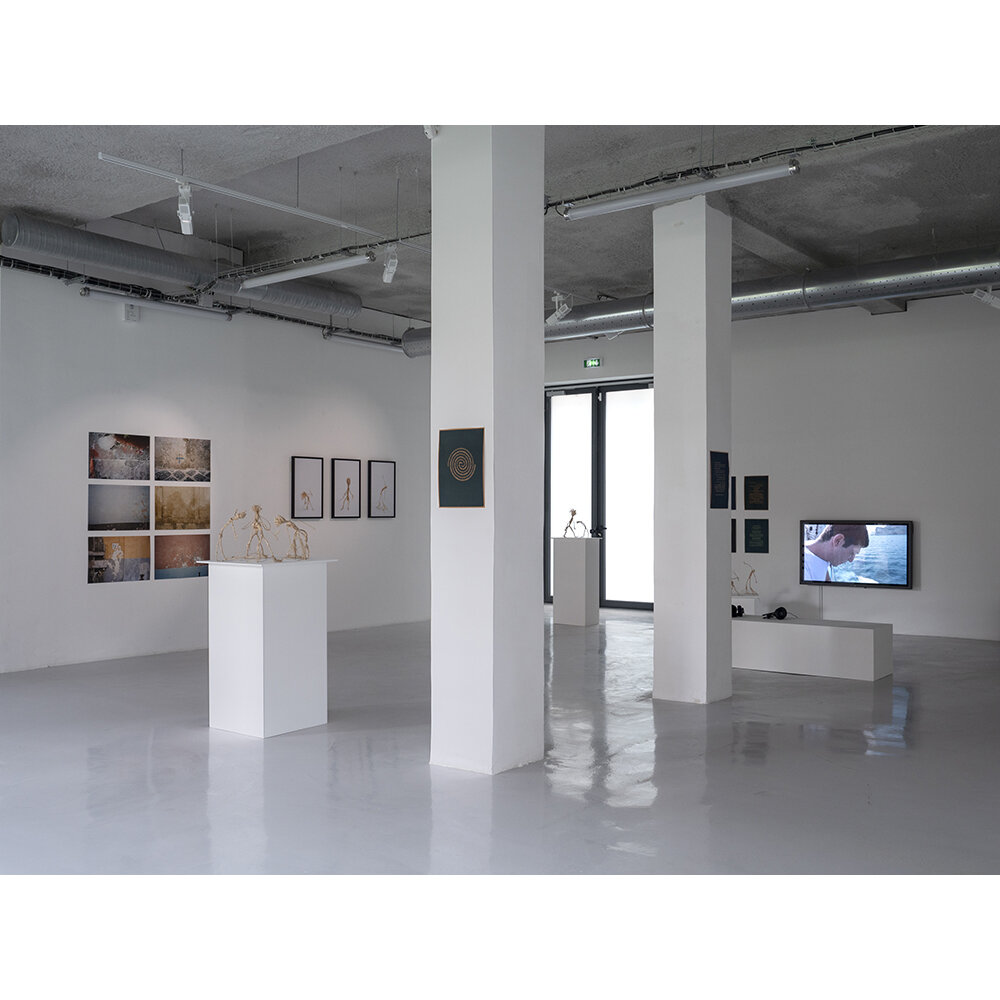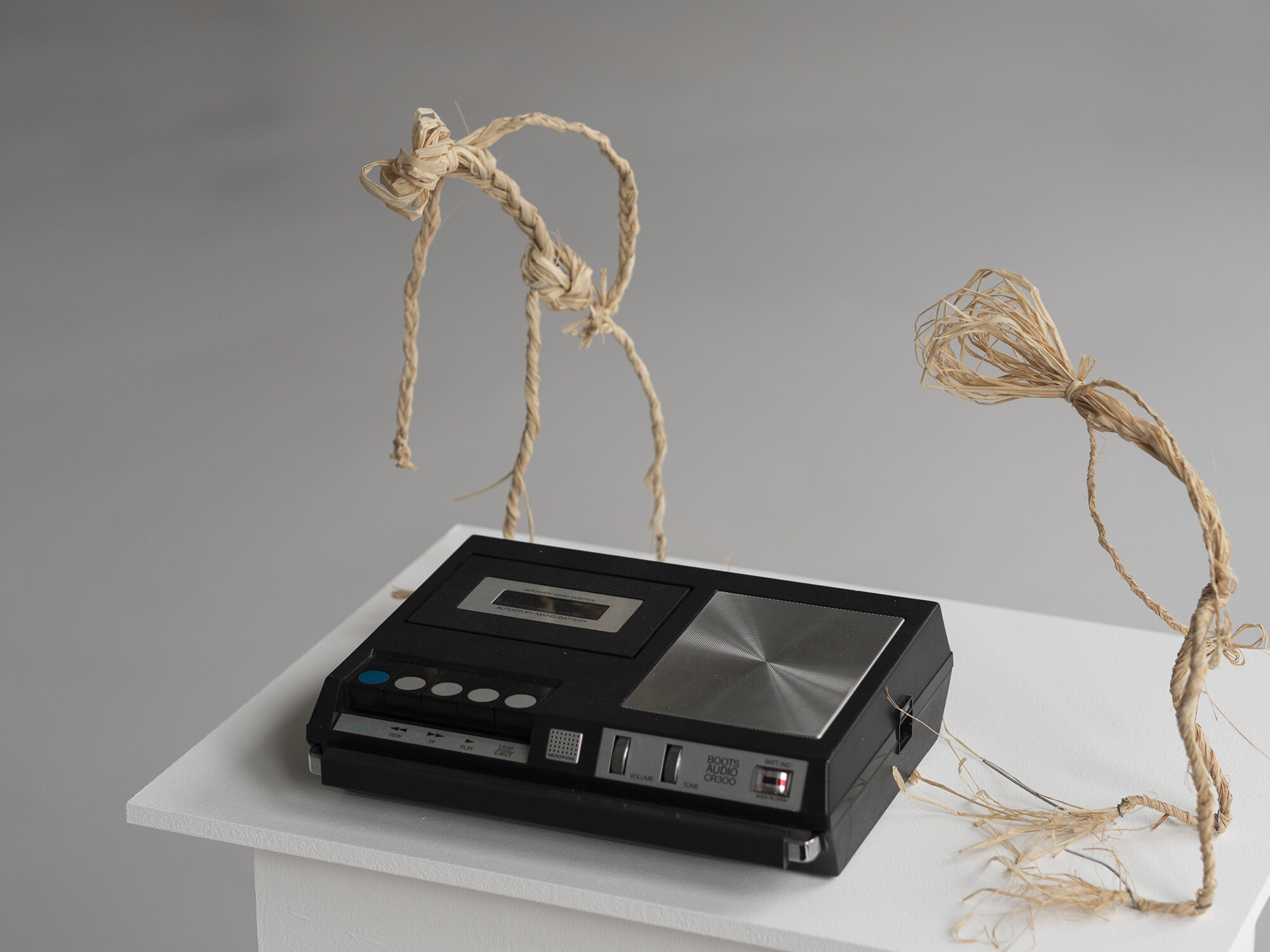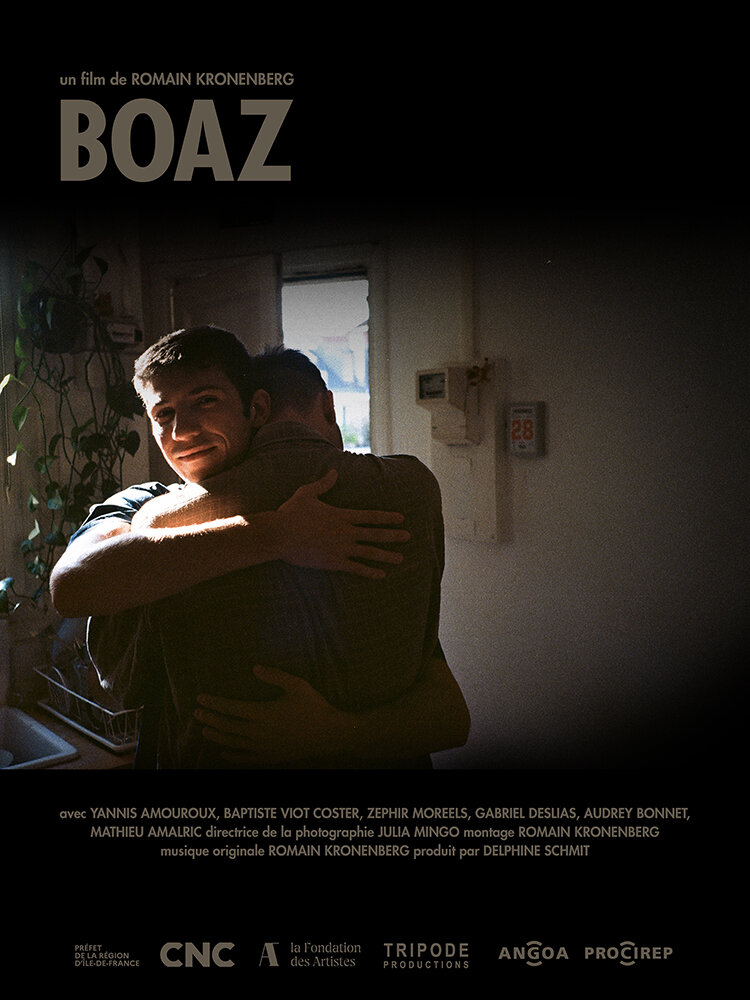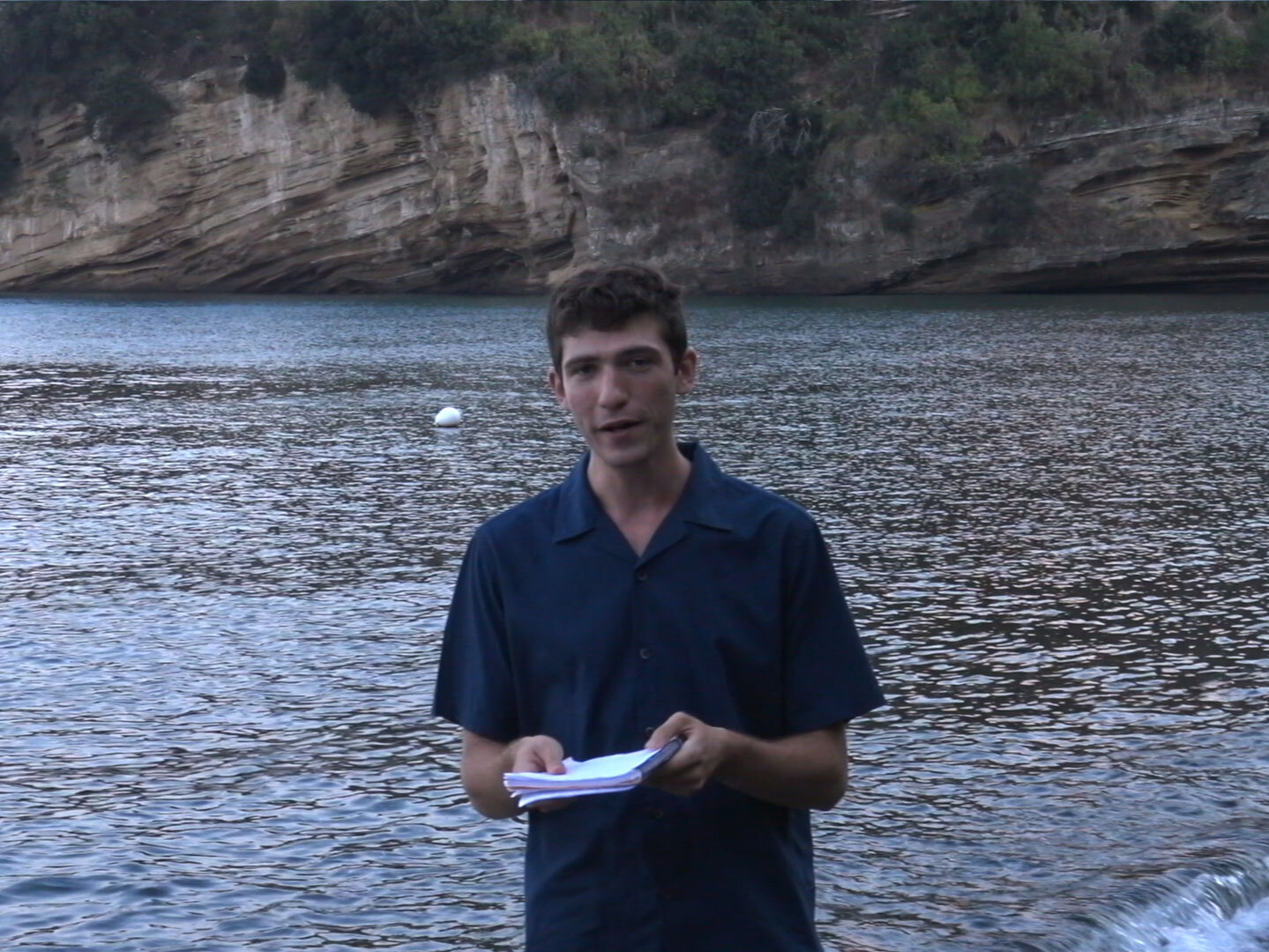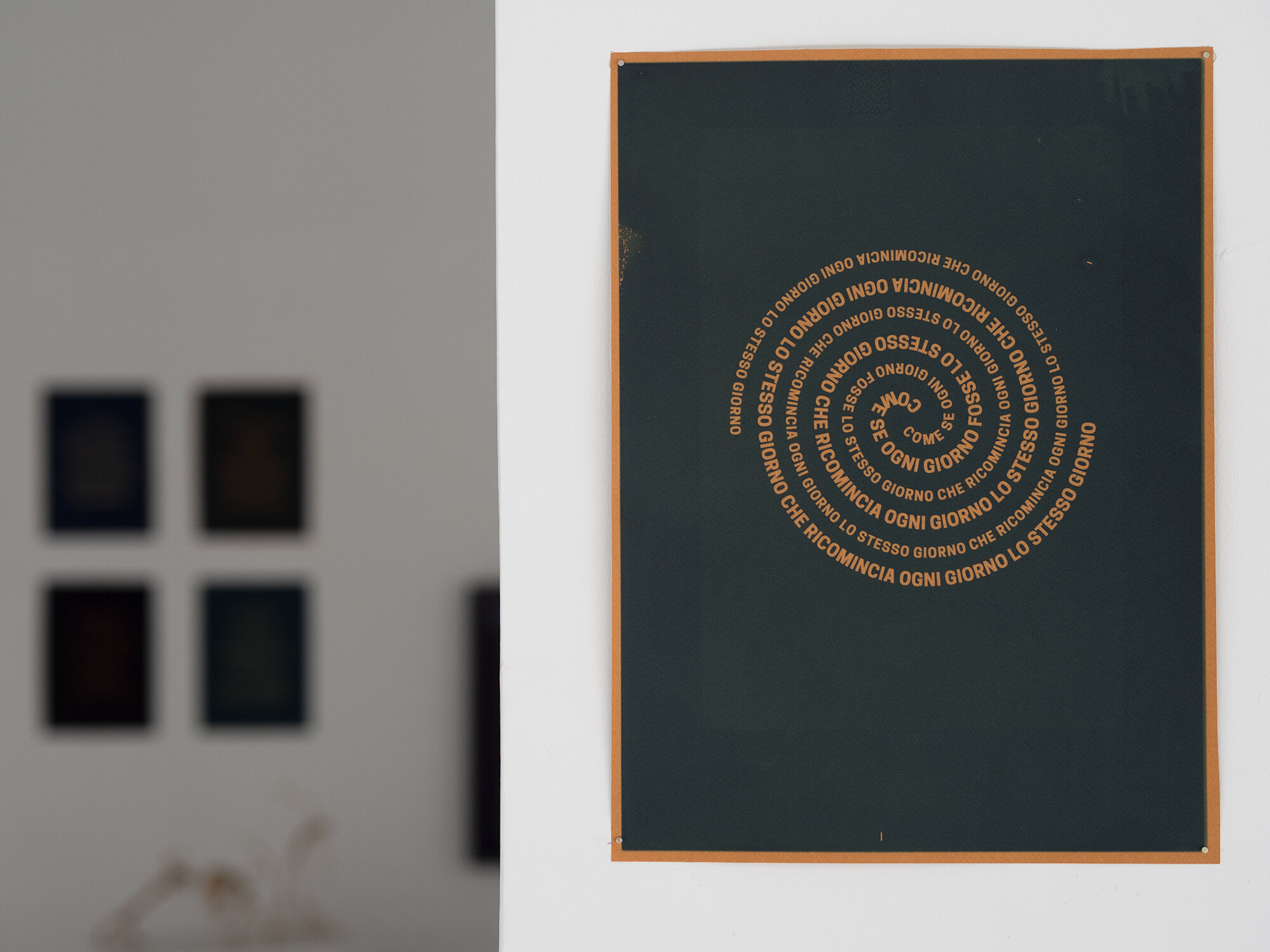BOAZ
Romain Kronenberg
22.05 - 19.06.21
galerie Sator Komunuma
PRÉSENTATION DU PROJET
Sujet. Boaz est la légende. C’est le postulat du récit et c’est la communauté où vit le jeune homme qui l’imagine, parce qu’elle a besoin d’une surface où projeter son désir de transcendance ; Boaz est cette surface. Pourtant, lui n’a rien demandé. Il aurait d’ailleurs préféré être un garçon comme les autres. Mais il accepte sa charge et donc n’est rien, n’existe pas pour lui-même ; il ne vit que pour eux.
Mais la légende ne peut pas vivre et tous le savent : Amos son père, Deborah sa soeur et la communauté toute entière qui le laissent partir, en conscience, mais sans savoir qu’il emportera avec lui Malachie, ce frère qui le vénère, duquel il est inséparable.
topic. Boaz is the legend. It is the postulate of the project and it is the community where he lives who decided it, for people need a surface where to project their desire for transcendance ; Boaz is this surface. Yet, him didn’t ask for nothing. He would rather be like any other boy of his age. But he accepts his duty and therefore is nothing, he doesn’t exist by himself and only lives for them.
But the legend cannot live and they all know it : his father Amos, his sister Deborah and the whole community who let him leave, without knowing that he’ll take Malachie with him, this brother who worships him.
BOAZ, MAGNÉTOPHONE
(magnétophone, cassette, voix sur la cassette)
Présentation. Tout commence en 2017 à Procida, une petite île au large de Naples où je suis en vacances. Alors que je me promène dans les méandres de l’île, je repère, dans une petite boutique d’objets de seconde main, un magnétophone aux touches de couleur que j’aime immédiatement et que j’adopte. De retour dans la maison de vacances, j’écoute la cassette qui y est logée. Déjà, dans la boutique, je l’avais remarquée. Sur la cassette, une voix d’enfant parlant en italien, un parole dont je ne saisis alors que des bribes. C’est à mon retour en France, tandis que je demande à Andrea de m’aider à la traduire, que j’en saisis l’intérêt - le mystère, parce qu’elle peut être entendue de multiples façons. Et c’est sur le ton dans la voix sur la cassette que je m’appuie pour décider que ce texte est sûrement important, pour son auteur. J’y relève des indices : un prénom, quelques lieux et des liens qui deviennent l’origine du projet, leur extrapolation - ce puzzle constitué de plus de pièces manquantes que reçues. Ainsi naît Boaz.
-
(tape recorder, cassette, voice on the cassette)
Presentation. It all began in 2017 on Procida, a small island off the coast of Naples where I was on holiday. As I wandered around the island and its winding roads, I came across a little second-hand shop. There I found a small tape recorder with colourful buttons that I immediately took a shine to and that I decided to adopt. Back in the holiday home I was renting, I listened to the cassette that was in the recorder, which I had already noticed in the shop. On the tape, a child spoke in Italian; I could only make out snatches of his speech. Upon my return to France, I asked Andrea to help me to translate the recording, and it was only then that I fully understood its value, namely the mystery which lays in its many, multiple interpretations. By the tone of the voice on the tape, I could tell how important this story was for its narrator. I picked up on various clues – a name, a few places, a handful of relationships – that became the origin of the project, their extrapolation, a puzzle of which I only possessed a few pieces : this was how Boaz was born.
BOAZ, ROMAN
(128 pages, éditions Sator, six cents exemplaires)
Résumé : Depuis sa naissance et sans que personne ne l’explique, Boaz est désigné légende par la communauté où il vit. À peine âgé de six ans et tandis qu’il vient de perdre ses parents, il est recueilli par Amos, l’épicier du quartier. Entre eux, un lien unique s’établit : ils se sont mutuellement accueillis. Mais c’est d’entre tous Malachie, le fils d’Amos, qui est le plus démesurément attaché à Boaz, comme le serait le mystique à la légende. Deborah, leur soeur, en est témoin. Entre le quotidien à Paris et les étés sur l’île de Procida, au large de Naples, le temps passe jusqu’à l’été de leurs vingt ans où Amos laisse partir ses trois enfants sans lui, où il les laisse accomplir leurs destins.
-
(128 pages, Sator editions, six hundred copies)
Summary. Since his birth and for reasons that no one can explain, Boaz has been known as legend by the community in which he lives. Aged six, and having just lost his parents, Boaz is welcomed into the home of Amos, a neighbourhood shopkeeper. That explains the unique bond linking the two of them. But it is above all Amos’ son, Malachie, who develops the most intense ties to Boaz, becoming the mystic to his legend. Deborah, their sister, bears witness to this devotion. Between the rhythm of everyday life in Paris and long summers on the island of Procida, time goes by, until Amos allows his three children, now twenty years old, to go on the island on their own and fulfil their destinies.
BOAZ, FILM
(durée 25 minutes, image 4k couleur 16:9, son stéréo, DNxHR & Mpeg4) avec Yannis Amouroux, Zéphir Moreels, Audrey Bonnet & Mathieu Amalric
Synopsis : Avec sa petite caméra qu’il garde toujours près de lui, Boaz filme son quotidien, et en particulier Malachie, son presque frère duquel il est inséparable. D’ailleurs pour les vacances d’été de leurs vingt ans, sur l’île de tous leurs étés, ils ont le projet de réaliser un film ; une idée de Malachie qui souhaite lever le voile sur la véritable nature de son frère, dire enfin pourquoi il l’admire tant. Mais Amos, leur père, annule les vacances et Boaz décide de convaincre Malachie qu’ils fassent leur film, malgré tout.
Le film est constitué de documents produits par ses propres personnages : images filmées par Boaz sur sa petite caméra et photographies d’Amos. À trois reprises dans le film, des témoignages sonores livrés par Deborah interrogée, vingt ans plus tard, au sujet de la disparition de ses frères par un homme d’autorité éclairent les images d’un jour nouveau.
Produit par Delphine Schmit (Tripode productions)
Avec le soutien du Centre National du Cinéma et de l'Image Animée
Avec le soutien de la Procirep et de l'Angoa
-
(film, 25min, 4k, stéréo,16:9, stereo, DNxHR & Mpeg4) with Yannis Amouroux, Zéphir Moreels, Audrey Bonnet & Mathieu Amalric
Synopsis. With a small video camera that never leaves his side, Boaz films his daily life, and in particular Malachie, his adoptive brother from whom he is inseparable. For the summer of their twentieth year, the brothers decide to make a film on the island where they have spent all of their holidays. The idea is Malachie’s who, by making the film, hopes to dispel the mystery that surrounds Boaz, and at last find the words to say why he admires his brother so much. But Amos, the boys’ father, cancels the holiday, and it is up to Boaz to convince Malachie to make the film regardless.
The film is made up of documents produced by the characters themselves : images filmed by Boaz on his small video camera and photographs taken by Amos. At three occasions throughout the film, we hear recordings of Deborah’s voice from twenty years later as she is questioned by an unknown authority figure, and we then come to see the images in a new light.
Produced by Delphine Schmit (Tripode productions)
With the support of the Center National Cinema and Image Animation
With the support of Procirep and Angoa
BOAZ EST MON FRÈRE
(durée 5min50, image 4k couleur 4:3, son stéréo, DNxHR & Mpeg4) avec Yannis Amouroux
Présentation. Dans le film, on découvre Boaz qui tente de convaincre Malachie qu’ils fassent leur film, malgré l’annulation des vacances sur l’île. À Paris, donc. On apprend aussi que les deux garçons iront finalement sur l’île, après que Boaz aura convaincu Amos qu’il laisse ses trois enfants partir sans lui. Enfin sur l’île, les deux frères le feront donc, ce film qui porte le nom des premiers mots qui y sont dits.
Extrait. « Après le déjeuner, après la sieste, je suis sortie de ma chambre, j’ai vu Malachie seul, dans leur chambre, qui regardait les images sur la caméra de Boaz. Ils avaient tourné leur film sur la plage le matin même, le vrai, avaient-ils dit. » Deborah dans le film Boaz.
-
(video, 5min 50s, 4k colour 4:3, stereo, DNxHR & Mpeg4) with Yannis Amouroux
Description. The film Boaz shows Boaz’s attempt to convince Malachie to make their film, despite the cancellation of their holiday on the island of Procida. Eventually, however, it also tells how the two boys will go to the island, after Boaz convinces Amos to allow his three children to travel without him. At last on the island, the brothers will make this film, whose title comes from the first words that are uttered in it. Boaz is my brother…
Extract. « After lunch, after a siesta, I left my room. I saw Malachie alone, in their room, looking at the pictures on Boaz’s camera. They had shot their film on the beach that morning, the real film, they said. » Deborah in the film Boaz.
BOAZ, PHOTOGRAPHIES D’AMOS
(prises de vue argentiques 35mm couleur, format d’exposition : papier Baryta Prestige Canson 340g, cadre aluminuim 30x40cm, photographies 20x30cm, passe- partout, verre optique)
Présentation. Amos saisit chaque occasion de photographier ses trois enfants : anniversaires, sorties au parc, l’Italie : de vraies photos de famille.
-
(35mm color film shots, exhibition format: Baryta Prestige Canson 340g paper, 30x40cm aluminum frame, 20x30cm photographs, mat, optical glass)
Presentation. Amos seizes every opportunity to photograph his three children : birthdays, afternoons in the park, holidays in Italy. True family photographs.
BOAZ, ALBUM D’AMOS
(dimensions de l’album fermé : 30x31cm, 100p, 4 chapitres introduits par deux cyanotype 24x18cm et deux reproductions dessins, 79 photos 22x15cm) avec la participation de Meris Angioletti
Présentation. L’album photo assemblé par Deborah est un objet de synthèse, où tous les protagonistes sont rassemblés : le pendentif de Boaz que je dévoile à travers un cyanotype côtoie les photographies d’Amos et les dessins de Deborah et Malachie.
-
(dimensions of the closed album: 30x31cm, 100p, 4 chapters introduced by two cyanotype 24x18cm and two drawings reproductions, 79 photos 22x15cm) with the participation of Meris Angioletti
Presentation. Deborah’s photo album is an object that synthesizes the project by bringing together all of its participants : amongst its pages, we find Boaz’s pendant transfered on cyanotype, drawings by Malachie and Deborah and photographs by Amos.
BOAZ, LES POUPÉES DE MALACHIE
(fil de fer, raphia)
Présentation. L’année de son dernier été, Malachie a un nouveau rituel - parce que sa vie tout entière n’est faite que de rituels : il confectionne des « poupées », ainsi nommées par Deborah, avec du fil de fer, un peu de paille, qui font vraisemblablement référence au Culte du cargo.
Extrait. « Avec des brins de paille, les Mélanésiens confectionnent des radios où ils récitent leurs prières. Malachie était fasciné par les Mélanésiens. C’est peut-être eux d’ailleurs qu’il incarnait dans ses poupées. » Deborah dans le film Boaz
-
(wire, raffia)
Presentation. In the year of his final summer, Malachie has a new ritual - for his life is made up of nothing but rituals : he makes what Deborah calls “dolls”, wire and straw figurines that probably refer to the Cargo cult.
Extract. « With bits of straw, Melanesians make radios where they recite their prayers. Malachie was fascinated by the Melanesians. Perhaps were they who he represented in his dolls. » Deborah in the film Boaz
BOAZ, PHOTOGRAPHIES DES POUPÉES DE MALACHIE
(tirage RC Canon satiné. deux formats : échelle 1:1 sous caisse américaine : 61x37cm / a échelle humaine contrecollés sur dibond : 170x103cm)
Présentation. Les poupées de Malachie sont animées, au sens où elles semblent habitées par une âme - tantôt joyeuses, contrariées, secrètes, menaçantes et
j’ai souhaité capter le caractère unique de chacune, photographiquement. Je destinais d’abord ces images à des agrandissements, changement d’échelle qui les rendraient humaines : des tirages de 170cm de haut puis j’ai souhaité les présenter aussi à échelle 1:1 : les montrer comme elles sont, témoigner de leurs tailles. Ces deux séries - ces deux échelles constituent donc deux interprétations des images.
-
(RC Canon satin print. two formats: 1: 1 scale under American box: 61x37cm / human scale laminated on dibond: 170x103cm)
Presentation. Malachie’s dolls are animated, in that they seem to be in possession of a soul : they are variously joyful, upset, secretive, threatening. I looked to capture on film the unique character of each one of them. At first, I imagined printing these images on a scale that would render them human. After making these 170cm-tall prints, however, I decided to present the dolls at scale 1/1 to show their real size as well. These two series, and these two scales, allow for different interpretations of identical images.
BOAZ, ÉTOILES
(Cyanotypes sur la base de dessins de Malachie, papier Canson Moulin du Roy torchon 300g, dimensions 60 x 90cm dans cadre alu 70 x 100cm, passe-partout, verre optique)
Présentation. Autour de Boaz - où qu’il soit, la vie s’harmonise. Les témoignages sont nombreux quie le confirment. Cette ordonnance fascine Malachie, qui la représente à travers ses dessins. Ces dessins, je les ai transférés sur cyanotypes, après en avoir changé l’échelle.
Extraits du roman. « L’étoile d’enfants qui épouse tes mouvements, Boaz leur centre, sur le sable, dans l’eau. (...) Amos te voit faire la planche, toujours le visage tourné vers le ciel. Sous les regards comblés de leurs parents, les enfants font la planche en étoile autour de toi. »
-
(Cyanotypes based on drawings by Malachie, Canson Moulin du Roy paper towel 300g, dimensions 60 x 90cm in aluminum frame 70 x 100cm, mat, optical glass)
Presentation. Wherever Boaz goes, harmony follows. Numerous accounts confirm this effect, one which fascinates Malachie, who attempts to record it in his drawings. Here I have enlarged his drawings as cyanotypes.
Extracts from the novel. « The star of children that follows your every movement, Boaz - their centre, on the sand, in the water (...) Amos sees you planking, your eyes turned skywards. Under the content gazes of their parents, the children plank, forming a star around you. »
BOAZ, IXES SUR L’ÎLE DE PROCIDA
(prises de vue argentiques 35mm couleur, format d’exposition : papier Baryta Prestige Canson 340g présentées sans cadre, 60 x 40cm)
Présentation. Les habitants de l’île ont un rituel : tracer une croix sur chaque mur où Boaz serait passé, en guise de témoignage : ici, la légende est passée. Avec le temps, les rues de Procida sont donc ponctuées de ixes, qui témoignent de la fascination de ses habitants pour le jeune homme.
Extrait. « A Procida, vous verrez des croix sur presque tous les murs et ces croix disent que tout le monde aime Boaz, et j’ai fait la promesse de ne pas en dire plus, sinon que personne jamais ne l’aimera autant que moi. » Malachie dans le film Boaz.
-
(35mm color film shots, exhibition format: Baryta Prestige Canson 340g paper presented unframed, 60 x 40cm)
Presentation. The inhabitants of the island have a ritual : they mark a cross on every wall that Boaz has passed next to. It is a means of bearing witness : the legend passed this way. Over time, crosses have come to dot the walls and streets of Procida, attesting to the island’s fascination for the young man. We can only imagine that it was Malachie who took these photos during his final summer on the island on the path between their home and the port.
Extract. « In Procida, you will see crosses on almost every walls. These crosses testify that everyone loves Boaz. And I promised to say no more than this, beyond that no one will ever love him as much as I do. » Malachie in the film Boaz.
BOAZ, AFFICHES
(cyanotypes sur papier de couleur)
Présentation. J’ai sélectionné certains passages du roman pour leur intensité, pour l’émotion qui les traverse, leur impact. Puis j’ai arrangé ces extraits, au format A4, selon une disposition qui me semble naturelle. Où les retours chariot, crénages et tailles de police mettraient en valeur le rythme des mots dont ils retransciraient la musicalité, lorsque je les lis. Souhaitant réaliser ces affiches personnellement plutôt que les faire imprimer, j’ai choisi de les “développer” selon le procédé du cyanotype. Mais voulant échapper au bleu et blanc de ce médium, déjà présent dans le projet, j’ai utilisé des papiers teintés dans la masse. Ainsi, le bleu de Prusse caractéristique du cyanotype se mêle-t-il à la couleur du papier, pour former des mélanges - parfois joyeux, pasfois austères, que j’accorde finalement aux textes eux-mêmes.
-
(cyanotypes on colour paper)
Presentation. I chose some parts of the novel Boaz for their intensity, their emotion or their impact. I then arranged these texts, on A4 pages, in a way that would respect their construction, the musicality of the words, when I read them. Wanting to make these posters by myself, I chose to transfer the page layouts on paper using the cyanotype technique. But wanting to avoid the white and blue colours typical from this method, that is already present in the project, I used coloured papers. Therefore, the Prussian blue blends with the paper colours and results in either austere or joyful compositions, that I tune with the texts themselves.
Ce projet a été sélectionné par la commission mécénat de la Fondation des artistes
Avec le soutien de la Direction régionale des affaires culturelles d'Île-de-France - Ministère de la Culture








